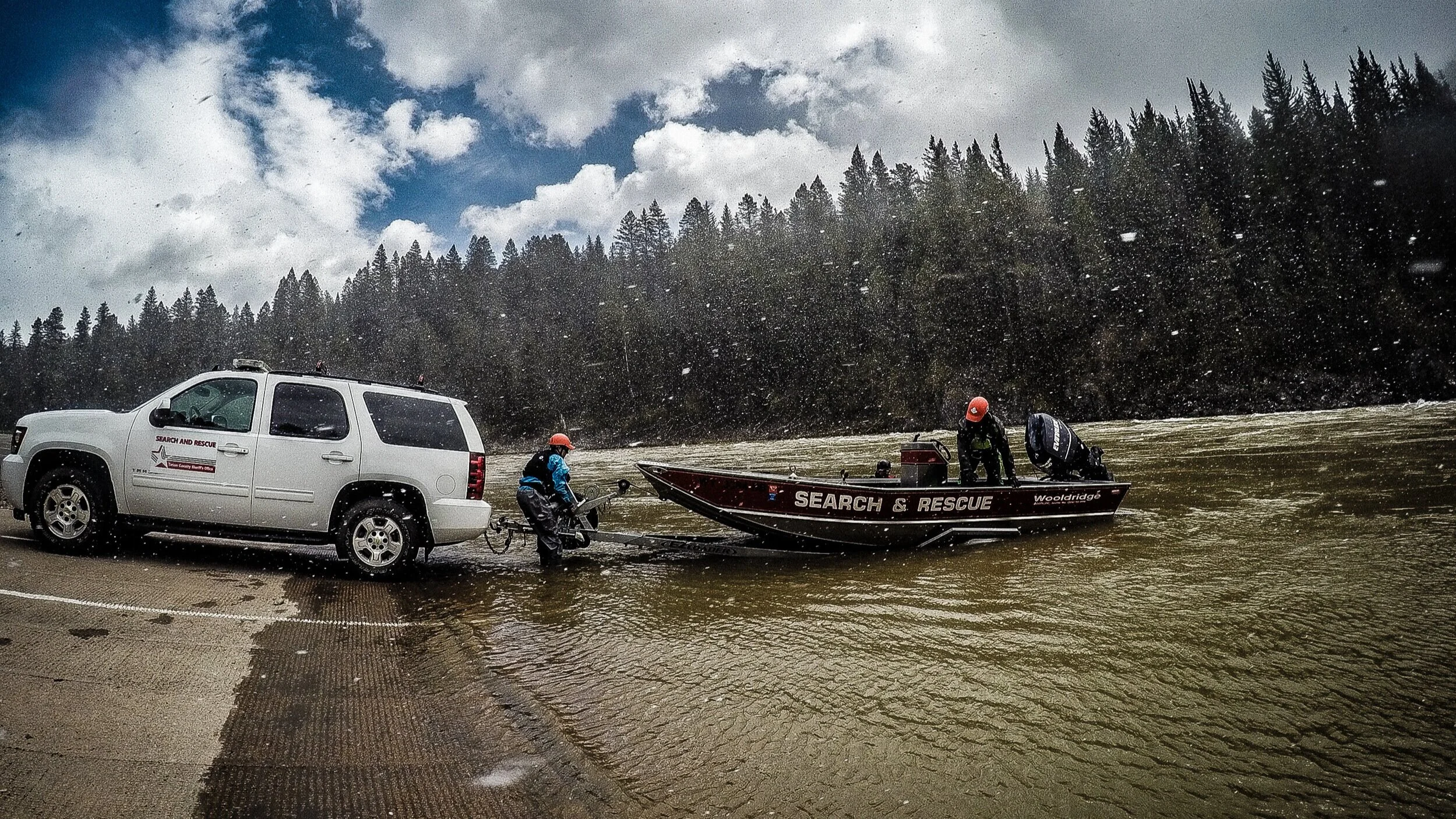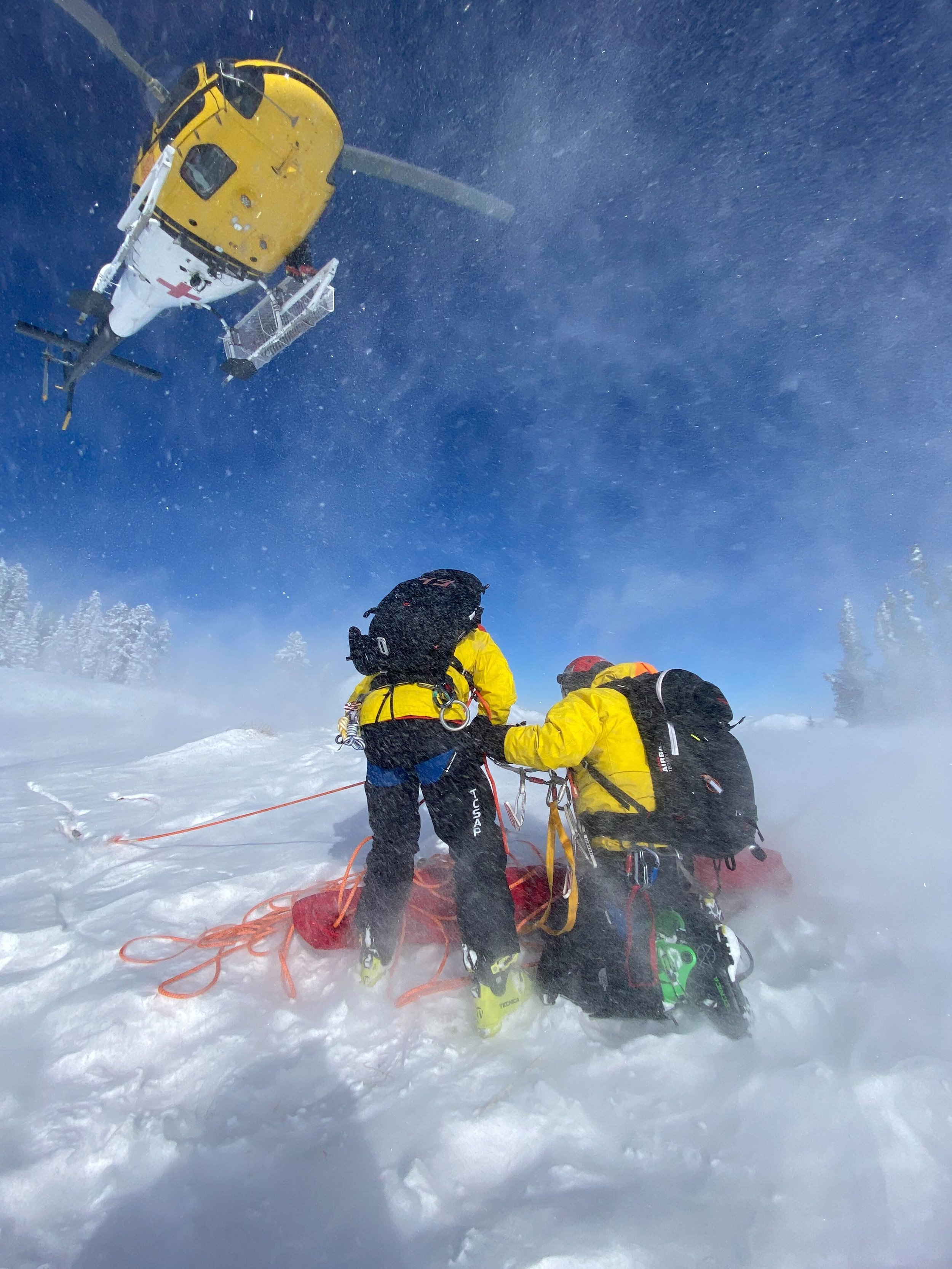Last week, TCSAR volunteer Ian Johnston characterized the team’s pilot, Steve Wilson, as “cool as a cucumber.” After reading the below interview, we think you’ll wholeheartedly agree.
Wilson grew up splitting his time between Colorado and New Mexico, and eventually ended up in Vail to be a ski patroller. That’s when he first became interested in flying helicopters, a journey that led him to flight instruction in Hawaii, sightseeing tours and wildland firefighting in Alaska, and a brief stint over the Grand Canyon. He continued to fly multiple seasons in Alaska and Kauai before landing in Jackson 10 years ago. He has since been a pilot for High Mountain Heli Skiing, and a rescue and firefighter pilot for Teton Helitack, working with Grand Teton National Park Climbing Rangers for 10 consecutive summers in the Tetons.
It’s week 4 of Heli-Yes! and still time to contribute to TCSAR’s life-saving helicopter operation. Please consider investing in this incredible community resource.
Three years ago, Wilson became TCSAR’s pilot, which elevated the crew’s heli operation in numerous ways, including providing a seamless integration between TCSAR and the Jenny Lake Climbing Rangers for interagency rescues.
First off, what are you doing when you’re not flying SAR missions?
When I'm not flying I'm usually enjoying time in the mountains and traveling with my wife, Irene, and daughters Bella, 7, and Grace, 5. We enjoy skiing, fishing, surfing and camping out. I also love to hunt in the fall.
Steve Wilson and family during the solar eclipse of 2017. Courtesy photo.
How and when did you know you wanted to be a helicopter pilot?
I first became interested in flying helicopters as a ski patroller in Vail, Colo. The Flight For Life helicopter would land from time to time to brief us on protocols when calling them in on some of the more life-threatening injuries. It was also a time when ski videos were coming out showcasing helicopters dropping skiers off in jaw-dropping terrain in far-off places. That certainly sparked an interest in me to become a part of that.
How many hours do you have to fly to be a SAR pilot and do you have to have a special license, versus something like heli skiing?
It doesn't take any special license to fly for SAR, just an accumulation of experience in mountainous flying and building the skills in the techniques we use to get people safely out of them. Each year we do take a check flight to ensure we remain proficient in some of these techniques, such as short-haul and bucket/longline operations.
Donating to TCSAR during Heli-Yes! ensures that Wilson and the volunteers can train in places where rescues actually happen. Photo: Keegan Pfeil/TCSAR
What keeps you coming back to the SAR world?
There is not a job out there I'd rather be doing. I feel extremely blessed to have the opportunity to help others when they need it the most, and to get to do it in my own community. Knowing that the sound of our helicopter overhead can bring hope to people in their most vulnerable moments is a great feeling.
What are the challenges with flying in the Tetons, including the difference between summer versus winter?
A lot of the challenges we face flying in the Tetons are almost always associated with the weather. Storms such as winter snowstorms or summer thunderstorms all have their associated hazards such as decreased visibility, whiteout, icing, lightning and winds. When it comes to mountain flying, winds are the big game-changer. A large majority of the rescues we perform are on the leeward side of the Tetons. When the path of a strong wind is disrupted by an obstacle, such as a steep mountain range, it causes that air to rise up the windward side and then spill over the other side in the form of rotors, downdrafts and subsequent updrafts. It can create a very turbulent environment. Then you add the lower air density caused by high altitudes and warm summer temperatures and you can be operating on the edge of the envelope of your aircraft’s performance.
It’s important to have the ability to read and adapt to these changing conditions, but most importantly the judgment to know when to turn around and let the mountains win that day.
In the winter, the colder temperatures create higher density air and greater performance of the aircraft. It also brings lower visibility in snow, fog and lower ceilings. And of course, there are the challenges associated with landing a helicopter in snow, in flat light, and whiteout conditions. The summer is more forgiving in the weather but less forgiving in aircraft performance due to warmer temps.
Inside the ship during a rescue, what sort of feedback and assistance are you receiving from the SAR members?
One of the key elements in the success of a helicopter rescue operation are the crew members. One of the points I make in briefing new crew members is letting them know they are not passengers, but active crew members who are also responsible for the safety of the flight operations.
In the enroute phase of flight, they are looking for hazards such as other aircraft, birds, power lines.
In the recon phase, they join the pilot in observing landing zones, hangfire potential and loose items that may cause damage to the helicopter.
In the landing phase, the pilot will oftentimes lean on the crew for rotor clearance and landing zone conditions in my blind spots. They are also always ready to intercept unwanted personnel from approaching the running helicopter to prevent those people from being struck by a rotor.
In short-haul rescue operations, we have a crew member acting as a spotter who is assisting with observing instruments when the pilot's attention is looking down at the rescuers. They also communicate with the rescuers with hand signals in case of loss of radio communications with the pilot. The bond and trust created over time between crew and pilot are invaluable when it comes to safely navigating challenging rescues and routine operations alike.
Communication between pilot and rescuers is integral to the mission. Photo: KC Bess/TCSAR
Can you describe how rescue helicopter operations have evolved over the years? Is it the recreating public, the skill of SAR team members, frequency and location of calls, amount of training and techniques, etc?
There certainly has been some evolution within the past 10 years since I started flying here in Jackson. The techniques haven't changed significantly over that time. I think this is due to the fact that the Jenny Lake Climbing Rangers and TCSAR have been fine-tuning these techniques for years and they're some of the best in the business at them.
The evolution came in the form of standardization between the different agencies. The two agencies train together and have established operating procedures that make it a seamless transition when performing a Park or County rescue on any given day. It's a unique and special relationship.
Over the years, it does seem like the backcountry is getting busier. We all could certainly feel the effects of the pandemic which caused a large influx of visitors to the area who may have otherwise traveled elsewhere. I'm not sure if that translated to more helicopter rescues, but it certainly taxed much needed resources that were available when those rescues did occur.
How long have you been flying short-haul operations, and is it unique to work with a volunteer short-haul team?
I've been flying as a short-haul pilot for 10 years in the Tetons. Working with a volunteer crew is unique in the sense that these folks have families, jobs and highly active lifestyles yet are as dedicated to training and performance as if it were their full-time job. They train often and maintain extremely high standards when they do. Constantly pushing ourselves and each other in training make it less challenging when it's time for the real deal.
Having been the pilot of numerous life-saving missions, what insight can you offer about the importance of Jackson Hole having a rescue-ready helicopter?
There are certainly a number of rescues that stick out. Some are heartbreaking. Some may seem routine at the time but may be a big deal to the person on the other end. Then there are the ones that without a doubt had the helicopter not been available, or if the team had not been prepared, those folks would not have returned home safely to their families. They're all important. We all live in this beautiful setting for a reason. Most of us live here because of our passion for recreating in the mountains. For the fortunate, they may never need to be rescued in the backcountry, but for those of us whose best day in the mountains suddenly turns into their worst, it's comforting knowing there's a well trained, caring and selfless team of people in this community who are there to help.
TCSAR pilot Steve Wilson and family get a lift from a more ancient mode of transportation. Courtesy photo.






